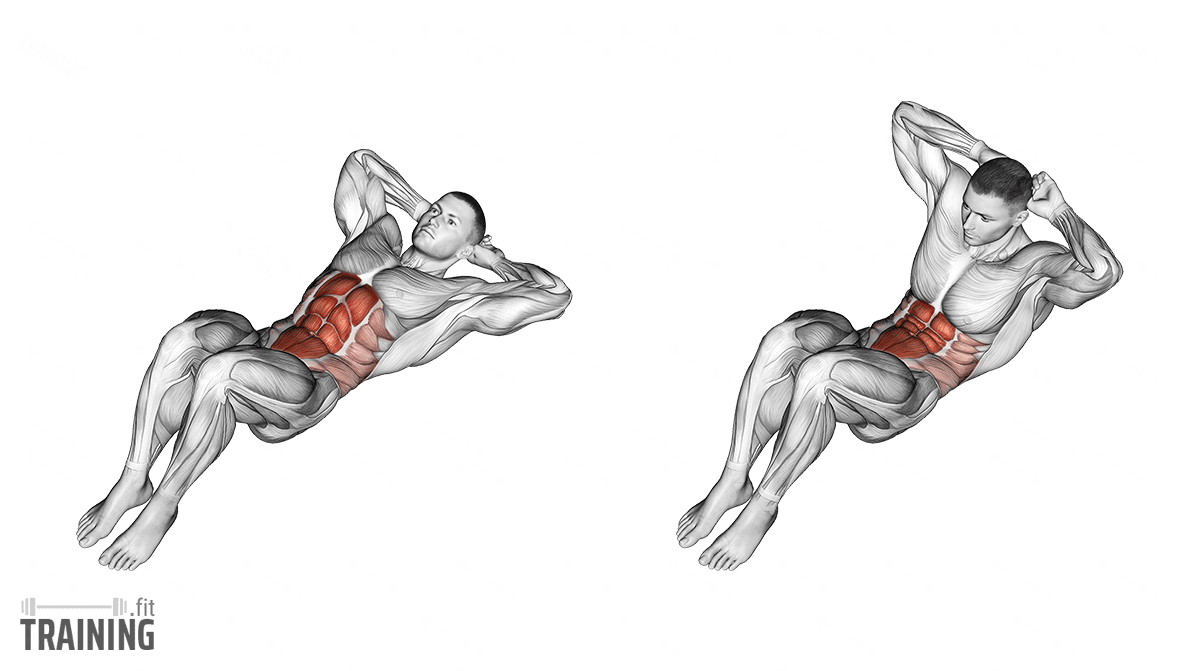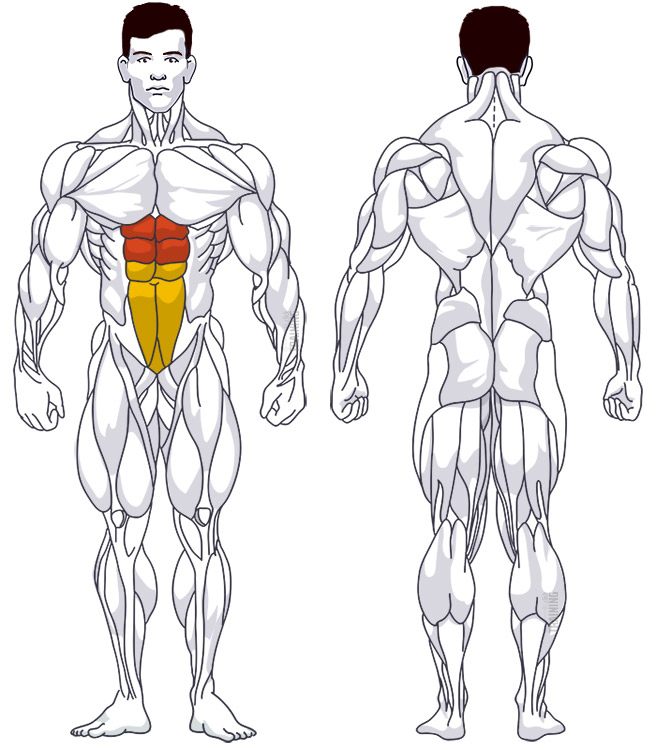Crunches
Isolation exercise, Body weightOverview

Main muscles
- Abdomen: Straight abdominal muscle
(Musculus rectus abdominis)
Training plans
Here you can find example plans for crunches training:
Crunches: Basics and alternatives

Involved main muscle groups:
Crunches
Crunches are a classic muscle training exercise, often confused with sit-ups, but they’re actually different. They’re also known as abdominal press.
This exercise is great for beginners and advanced users alike and can be done almost anywhere. To protect your lower back and tailbone, use a soft surface like an exercise mat or even a carpet if you don’t have a mat. If you prefer not to lie on the floor, you can also do crunches on a machine or with a cable pulley.
Crunches work the entire straight abdominal muscle, but they focus more on the upper area. So, they’re particularly effective for the upper part of the abs.
Reverse crunches can be added to target the lower abdomen more.
Correct execution of the crunches
Step-by-step instructions
Lie flat on your back on an exercise mat.
Bend your knees and bring your feet closer to your butt, keeping them on the floor.
Your knees should be bent about 90 degrees, with your heels a good distance from your butt.
Keep your legs close together, no more than hip-width apart.
Place your hands on the sides of the back of your head, elbows pointing outwards. This is the basic crunch position.
Keep your head straight and gaze upwards.
Lift your upper body towards your knees, bending your torso slightly as you exhale.
Inhale as you lower your upper body back down.
Maintain body tension when lowering, controlling the descent instead of just dropping.
To maintain tension, don’t lie flat on your back at the end of the movement. Keep your shoulders and head in the air, with shoulder blades not touching the floor until the exercise is done.
Common mistakes
Don’t fold your hands behind your head while doing crunches. It may be more comfortable, but it can cause you to pull your head forward and rest your chin on your chest, creating unnecessary tension.
In this position, people often try to use their arms to help lift their head, which reduces the crunches’ effectiveness and can even lead to injury.
Instead, avoid moving your head/neck during the exercise, focusing on moving only the upper body. This will maximize the training effect and help you achieve the best results.